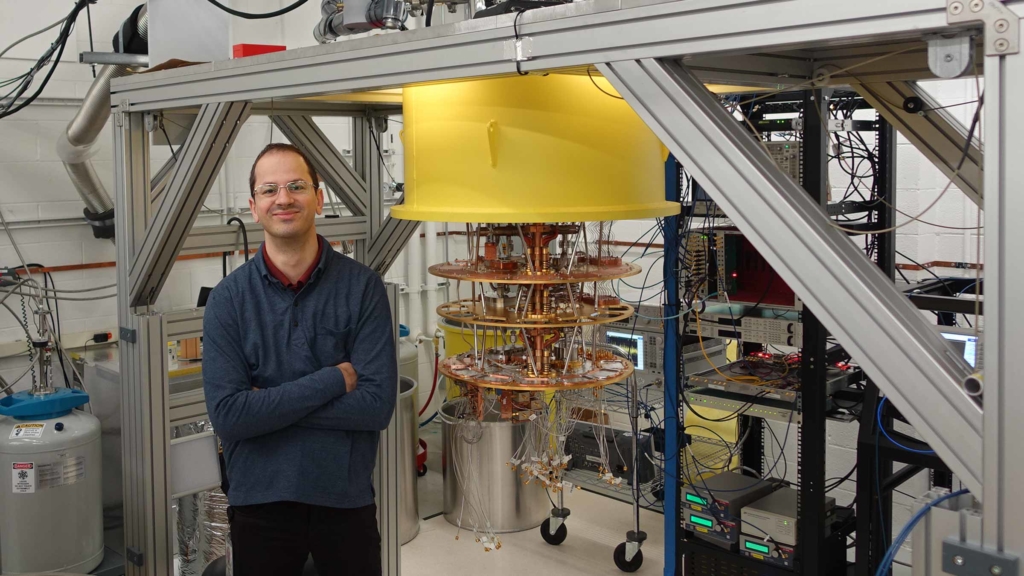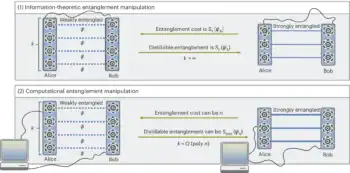Computer scientist Rami Barends describes his unorthodox route through academia that led to him joining Google’s hardware lab to build a quantum computer
The Google quantum hardware lab in Santa Barbara in the US, that’s where I work. We’re trying to tap into a potentially vast natural resource for computing, by harnessing quantum mechanics – something that has never been done before. Success means pushing the computational boundaries of mankind, and the new techniques and materials we develop in achieving this goal will be added benefits. But the path that brought me here wasn’t an obvious one.
When I was close to graduating from high school, I visited several universities and departments to decide what degree to pick. I wanted to study a science, but there are many disciplines, all of which looked exciting – I couldn’t make up my mind. Then it struck me. If you turn off the electricity, there’s isn’t much computer science, aerospace engineering doesn’t apply to a vacuum, and maritime engineering doesn’t help you if you find yourself in a desert. Yet, physics will always be there.
In the end I decided to study physics at the Delft University of Technology in the Netherlands, so that I could remain close to my family. Their physics curriculum takes five years – a good introductory programme is followed by coursework, a small project halfway through, and ends on a high note with a full year in a research group.
The quantum and solid-state physics courses really took off in my third year, and I disliked them. I got bored because of the courses did not got much into the how and why of the science, and the focus was on endless crystal lattices. I liked other disciplines in physics and was good at maths. But at the end of the third year, I had a sudden change of heart – my love for solid-state physics blossomed when I got the chance to work in Teun Klapwijk’s group at Delft, on research related to astronomical instrumentation – detectors to be precise.
The topic was “bolometric mixers”: you take a superconducting wire and bias it with a current. A little added starlight will then heat up the wire, which creates a measurable resistance. The idea was to increase the detector’s (i.e. the mixer’s) bandwidth by engineering the electron diffusivity. For my final year I came back to the same group to dive deeper into this topic. I was amazed that understanding the concept of how electrons pair would allow you to build a detector to learn about the universe.
Unsurprisingly, my PhD started in the same group as well, on subject of “microwave kinetic inductance detectors”. The premise was simple: with a superconducting resonant circuit, light from faraway planets, stars, or even the Big Bang itself, can be absorbed – this light breaks up paired electrons, leading to a measurable shift in frequency. Arraying such resonators provides a path to building large-scale, far-infrared cameras. I learnt a lot about microwave engineering, system design and the low-temperature physics that goes on in superconducting systems – invaluable for my next endeavour.
After my PhD, I wanted to increase my intellectual and geographical radius, and so I moved to the US and took up a postdoctoral scholarship in John Martinis’s group at the University of California, Santa Barbara, to work on superconducting qubits. That was in 2010, when such qubits had significant issues related to noise, loss and the parasitic detection of far-infrared radiation – all topics that I had fortunately covered during my PhD. Moreover, quantum-computing research made some big promises but had been going on for well over a decade, so I decided I wanted to see what it was all about for myself.
The key challenge in building qubits is increasing the coherence time and keeping them isolated, while simultaneously connecting them to other qubits and control lines. This is a tough balancing act. Coherence is also affected by many varying factors, some of which are unknown. By combining several innovations, including a redesigned qubit, a quiet sample environment, and novel materials research, we achieved coherence times that were 1000× longer than the qubit gate operation time, in a coupled system. After figuring this out, the demonstrations of record gate fidelities, error correction, and quantum simulations of chemistry and adiabatic evolutions followed suit. We knew we had laid the foundations for something bigger.
In an unprecedented move, our Santa Barbara team joined Google to form the new quantum hardware lab in 2014, maintaining a presence at the university while setting up a new lab at the company. The combination of being dropped from ongoing funding, writing a research paper and interviewing for a new role at Google was a little hectic. However, joining Google introduced a new level of professionalism, secured long-term funding, and allowed for retaining skilled people, as many academic positions are temporary. Moreover, thanks to the large amount of support within Google for materials analysis, clean software practices and electronics development, our project was able to move along faster. For me, the largest change is that the focus has shifted from building quantum systems for academic interests to developing them for applications. The day-to-day activities haven’t changed much: running experiments, analysing data, iterating designs and writing software. But I now have the freedom to set out quantitative metrics to achieve, and dive into the fundamental issues in qubit coherence and scaling, leaning on the physics training I’ve obtained over the years. So what is the best path to join quantum-computing efforts today? Looking back, while joining Google was obviously a very distinct event, the foundations were laid earlier, when I realized the link between mesoscopic physics and astronomy. Research and development are not separate processes. I’ve had the privilege of working with the best in the field, learning from project investigators, guiding bright students, collaborating with external groups, and now working with a great team at Google. Even though my path here was an unusual one, I can now make a difference, because quantum computing is a nascent field that lies at the crossroads of many disciplines.




